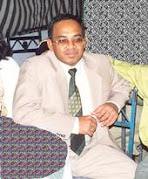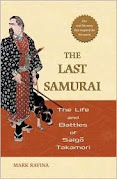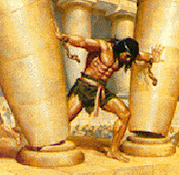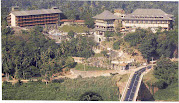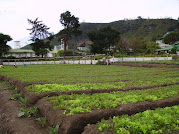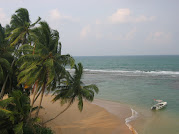



SRI LANKA HOLIDAYS: Ancient Inscriptions of Sri Lanka Part 1
bunpeiris
www.rioltalankaholidays.com www.mysrilankaholidays.com www.bunpeiris.com
Tour the beautiful island of Sri Lanka, the Land of Delights with Riolta Sri Lanka Holidays & get overwhlemed with Total Holiday Experience.
The University of Cambridge, England has 274 volumes of 'Epigraphica Zeylanica' with over 3000 inscriptions from Ceylon (that is more inscriptions than the whole of mainland China has, even though Sri Lanka is only 1/2 the size of the state of New York), including one dating back to 6th century BC. Over 2000 of these have been deciphered, indicating the consistent development of the Sinhalese language.
Gold inscriptions
The Vallipuram gold plate inscription found in Vallipuram near Vadamaracchi in Jaffna peninsula has been dated by archaeologists to the reign of king Vasabha (67-111AD). The priceless inscription indicates that the governor of Jaffna peninsula named Isigiriya, a minister of Sinhalese king Vasabha built a vihara, a Buddhist temple named "Piyagukatissa" also known as Nakadiva or in Sanskrit as Nagadipa. This is an archaeological evidence that collaborate with the fact that even in the first and the second centuries of the history of Sri Lanka, Jaffna peninsula of the Resplendent Island was under the rule of Sinhalese kings.
Cave inscriptions
Following extract is by kind courtesy of Mr. Ratna Paranavitana.
Sinhalayo (ISBN 955-9170-20-1) by illustrious scholar archeologist Dr. Senerat Paranavitana (1896-1972), the first Ceylonese Archeological Commissioner of Sri Lanka. He served as the editor of Epigraphia Zeylanica from 1929.
Quote
The earliest archeological remains connected with Sinhalese, which are still preserved without alteration in later times, are the many hundreds of caves with inscriptions engraved on their brows, found in various parts of the Island. These caves, which are hardly more than natural rock shelters, are found among the numerous boulders of gneiss which litter the sides of hills in certain places like Mihintale, Ritigala, Dambulla & Situlpavu of Sri Lanka.
At other sites, there are to be found only a few, in some sites there being only a single cave. The artificial improvements effected to these caves consist mainly of a drip line cut along the brow, so as to prevent rain water flowing into them. Some of these caves were provided with walls which, as well as the face of the rock inside, were covered with a coating of lime plaster, & painted in some instances.
In some of the caves, inscriptions have been incised below the drip line. The shortest among the cave inscriptions comprises of only four letters; the longest of over seventy five. The number of these records, of which copies have been secured so far, exceeds 1200. The brevity of the individual; records is compensated for by their number.
The script of these records is the same as that of the most ancient historical inscriptions in India. The edicts of Emperor Asoka, to which reference has already been made, are in the same script. Closer examination of the script of these records reveals that the forms of the individual letters were imperceptibly undergoing change during the period on which they were being written. A comparison of these records from Ceylon with the forms in the Asoka inscriptions & others in India, to which definite dates can be given, enables us to conclude that these cave inscriptions have been made in dates ranging from approximately the last quarter of the third century B. C. to about the end of the first century A.C.
The art of writing appears to have been practiced by the ancient Sinhala people before the arrival of the Buddhist missionaries from India in the time of Asoka, for the Ceylon inscriptions of early date have given two letters in forms different from their counterparts in the edicts of the Indian emperor.
Among the Brahmi inscriptions of Ceylon, there are also a considerable number written from right to left, which is not the direction of writing in the vast majority of Asoka’s edicts in Brahmi.
Like the script, the language of these documents is akin to that of the earliest records found in India. The various dialects, in which the inscriptions of Asoka were framed, belong to a family of languages-namely the Indo Aryan-of which the most highly cultivated is the Sanskrit, & to which belong the languages spoken today in North India as well as Sinhalese. A study of the language of the records in the caves in Ceylon, enables one to conclude that it has, by gradual changes following natural phonological laws, given rise to the Simhala that is spoken today.
The Aryan languages are spoken today in the North of India. The languages of South India included in a different family, the Dravidian.
These inscriptions thus corroborate the literary tradition according to which the Sinhalese migrated to this Island from Lala, a region in North India. Considering that there is, between Ceylon & the regions in which the Aryan languages are spoken in India, an extensive area in which the languages spoken by the people are non-Aryan, the original Sinhalese, as their traditions testify, must have arrived in this Island by sea-routes.
The oldest Sinhalese inscriptions are found in the north as well as in the south of the island, in its western regions as well as in the east. They are also found at sites in the hilly country, though the majority of sites containing early Sinhalese inscriptions are found on the plains. By the time these inscriptions came to be indited, therefore, the Sinhalese people had occupied practically the whole island. In those days of slow communication & manual agricultural labour, the occupation of entire island by immigrants from abroad must have taken at least two centuries. The traditional date of the arrival of Sinhalese on this Island, in the middle of the sixth century B. C. , is thus not very much wide of the mark.
Unquote
To be continued
Following information is for the benefit of readers who would like to dig deep into the subject refered herein.
'Epigraphica Zeylanica'
Following are details of a reprint of Vol. 4 of 4 vol. publication.
Archeological Survey of Ceylon
Epigraphia Zeylanica
Being Lithic & Other Inscriptions of Ceylon
Edited & translated by
H. W. Codrington Ceylon Civil Service (Retired) &
S. Paranavitana
Epigraphical Assistant to the Archeological Commissioner
Published for the government of Ceylon by Humphrey Milford
Oxford University Press, Amen House, E.C.
Printed in Great Britain 1934
Asian Educational Services reprint of Vol. 4 in 1994
ISBN 81-206 -0930-1









